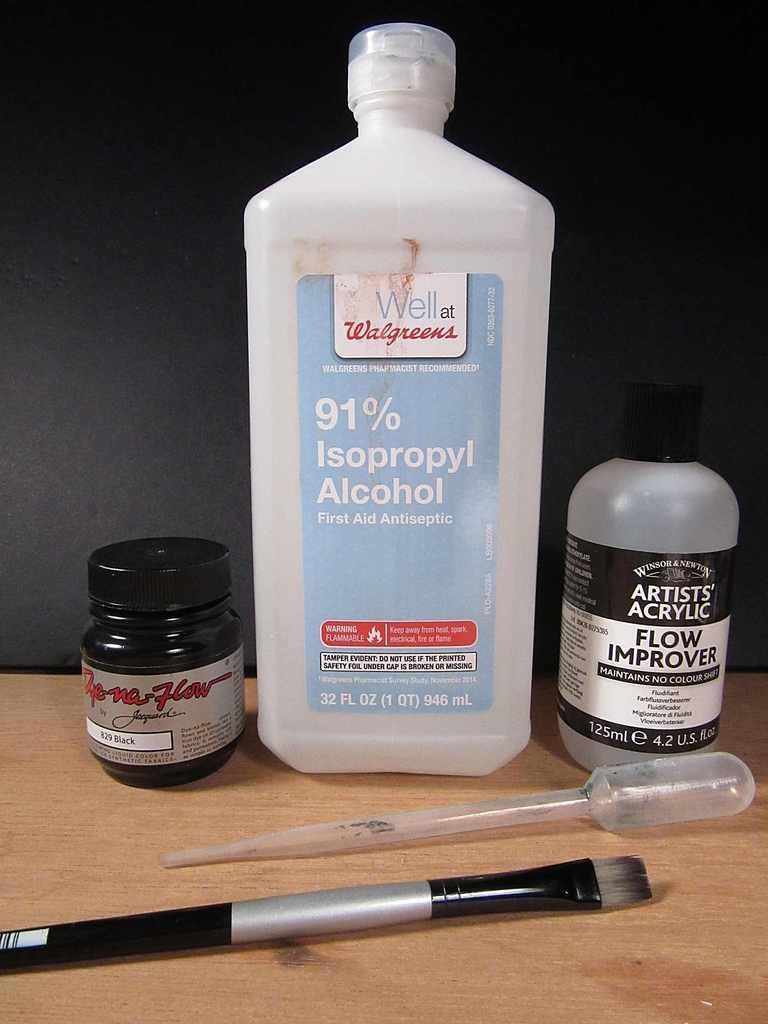Old Wood
Before I had started this build I did some searches on weathering plastic. At that time I had stumbled on an obscure, but a really great reference. It was a keeper, and I stored the link. I had completely forgotten about the link though when I started researching this again. What is crazy is that this reference didn't come up in the subsequent searches that I did. The short of it is that I found the link, studied the simple process, and then I set out to see if I could make it work.
Here is the link. To save myself some typing about the process, take a look at it, and if interested come back to this post for more info.
http://www.pacificcoastairlinerr.com/rough_weathered_plastic/
Continued
I followed their instructions with one exception. The writer recommends sanding the plastic to provide something for the wash to grab onto. Their example was with using a sheet of plastic deck that is much larger in scale than my deck pieces. The detail on mine is very small in comparison, and I did not want to risk damaging it by sanding.
The Journey
1. At first I tried using Gull Gray as the base coat. It's what I had on hand and it's fairly light in color. No matter how much that I thinned the wash the end result came out too dark.
2. I moved to a flat white base as the article suggests using. Now we are getting somewhere. It took some practice diluting the wash but I was starting to dial in the correct color depth. I used water to thin the dye as per the article. However, the wash was not behaving well for me. The wash pooled up and this made it very difficult to brush on without leaving brush marks, and/or, bare spots.
3. Next I tried using acrylic paint leveler in place of the water. What do you know, that helped a lot. The dye seemed to disperse and settle better. I am getting there, but I still couldn't quite get the look that I wanted. To my eye, the end result was still not believable. At this point, I had come to the conclusion that I am hitting a wall because I hadn't sanded the plastic. In the end, I think that is the probable stumbling block.
4. What now? The only thing that I can think of to try is adding other paint thinners to the mix. It seemed like a long shot, but crazier things have happened. I tested adding both Tamiya and Aztek acrylic paint thinners. Not surprisingly, I didn't see much of a difference.
5. I am about to throw in the towel when I look to the back of my bench and I see a big bottle of IPA. I thought, what the heck, I might as well try it. So I do. I mix up a small batch, brush it on, and I watch to see what happens. Seriously, this was a eureka moment. As the wash dries it all begins to lay out perfectly. I think that what is happening is that the IPA is softening the underlying paint layer, and that this is allowing the dye to attach itself better. The final quirk in all of this is that for some reason, the IPA causes the finish to appear bone dry, mimicking old wood. Combining IPA with the paint leveler was the little miracle that I was looking for to pull it all together. The beauty of it is that it negates the need to sand the plastic, in my opinion.
There you have it.
What you need is shown below. The mixing proportions is still a bit sketchy, but I can tell you this much. I used two drops of dye that I drip off of a mixing stick, about 1/3 a pipette of paint leveler, and about 1 pipette of IPA. I use a wide flat brush for application because you get more coverage quicker. I dip it into the solution and then wick off a little on a paper towel by dabbing it once.
(Note: Applying too heavy a flow can start to work against you. I had seen peculiar things happen. This is particularly true if you create too large a pool in any given area)
Flow it on and try to even it out some. Try not to re-work the same area for too long. Smooth it out some and move on. If you have to work on a certain area do it quick. You have a limited time to work things out because once that it all starts to set, it will smear if you keep working it. Along with that, the IPA softens the underlying paint. If you work an area over and over you will start to remove the paint. In either case, the work becomes toast, and then it becomes a do-over.
You will need to experiment. It is amazingly easy once you get the right mixing proportions figured out. You just flow it on and the solution does all the work. All the nice nuances magically appear.
So, that's the deal.

I decided to continue testing. I will strip the current work, reapply the white base, dry brush some color, and then reapply the wash. Lets see where that takes me. I really do like the all gray look that I have now. However, as long as that I am at a stage that I can still experiment, why not try. I will update as I progress.
One last thing. The same website offers a lot of other nice tips. It is geared to Model Railroading but much of it can cross over to things like dioramas and such. It's good stuff. Links are below.
http://www.pacificcoastairlinerr.com/weathered_wood/
http://www.pacificcoastairlinerr.com/4x8/